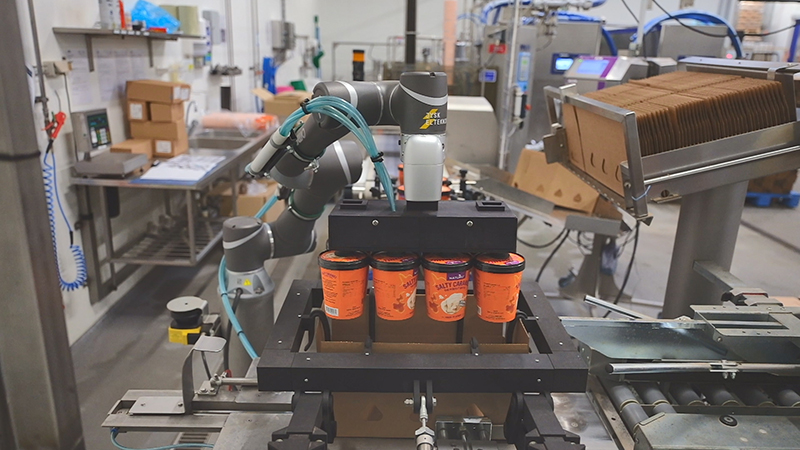THE end-of-line packaging process at Ice Bakers, a Danish producer of plant-based ice cream, has been automated with an OMRON TM cobot featuring a 3D-printed suction cup tool.
The solution is designed to help Ice Bakers keep up with demand for its dairy-free vegan ice cream.
In 2017, Claus Sørensen, an entrepreneur and ice cream maker from Thisted, Denmark, began producing vegan ice cream made from rice and oats. The popularity of the company’s plant-based ice cream grew, leading to a need to automate the otherwise manual production.
“Consumers have responded incredibly well to our vegan ice cream range, and we reached a point where it was necessary to automate a number of processes to keep up with the enormous demand from the market,” he explained.
The business now produces over 30,000 litres of vegan ice cream per week.
The OMRON TM collaborative robot was implemented at the end of the production line and packages 10,000-12,000 ice cream tubs daily. The robot is equipped with a 3D-printed tool with vacuum suction that can lift eight tubs at a time into a cardboard box, increasing the line capacity by 80%. Automating the process also relieves human resources for more complicated jobs.
The solution, implemented in 2021, was developed by Jysk Elteknik and Jens A. A/S in collaboration with Ice Bakers, using OMRON’s TM series technology, including the Sysmac platform, PLC control, and other standard components.
Niels Jørn Poulsen, CEO of Jysk Elteknik, added, “We know OMRON well, and it quickly became clear that OMRON’s TM series was the obvious technology for such a solution.”
Ice Bakers needed both high capacity and the flexibility that is said to characterise collaborative robots.
“It is a good example of how as a food manufacturer, you sometimes get overtaken by reality when you invent a good product that consumers demand,” explained Torben Friløw, channel sales manager at OMRON Industrial Automation Europe Denmark. “And then there is often a need for automation solutions that make it possible to scale up production so that capacity does not become a hindrance to growth.”














